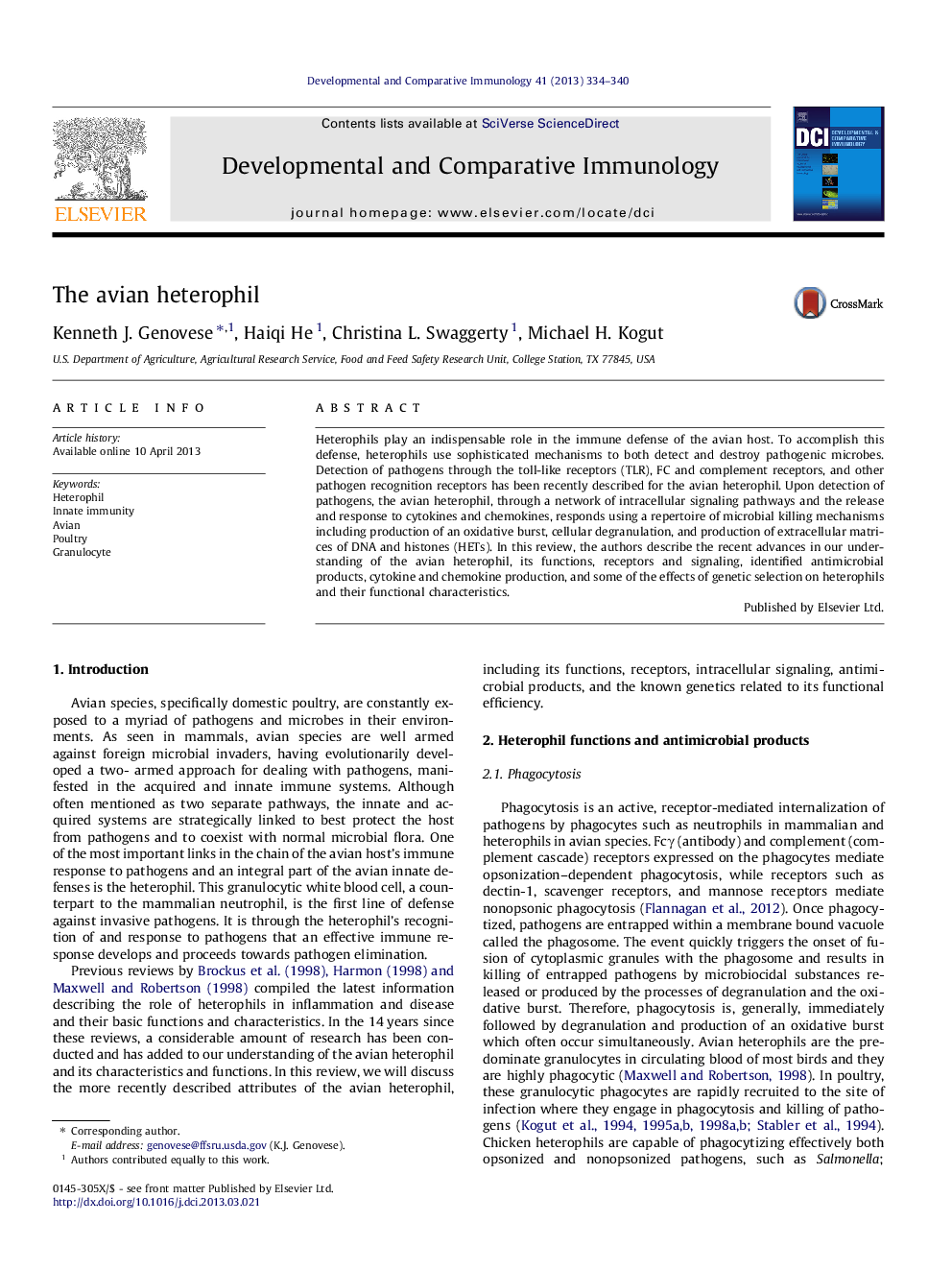| Article ID | Journal | Published Year | Pages | File Type |
|---|---|---|---|---|
| 10971483 | Developmental & Comparative Immunology | 2013 | 7 Pages |
Abstract
Heterophils play an indispensable role in the immune defense of the avian host. To accomplish this defense, heterophils use sophisticated mechanisms to both detect and destroy pathogenic microbes. Detection of pathogens through the toll-like receptors (TLR), FC and complement receptors, and other pathogen recognition receptors has been recently described for the avian heterophil. Upon detection of pathogens, the avian heterophil, through a network of intracellular signaling pathways and the release and response to cytokines and chemokines, responds using a repertoire of microbial killing mechanisms including production of an oxidative burst, cellular degranulation, and production of extracellular matrices of DNA and histones (HETs). In this review, the authors describe the recent advances in our understanding of the avian heterophil, its functions, receptors and signaling, identified antimicrobial products, cytokine and chemokine production, and some of the effects of genetic selection on heterophils and their functional characteristics.
Related Topics
Life Sciences
Biochemistry, Genetics and Molecular Biology
Developmental Biology
Authors
Kenneth J. Genovese, Haiqi He, Christina L. Swaggerty, Michael H. Kogut,
